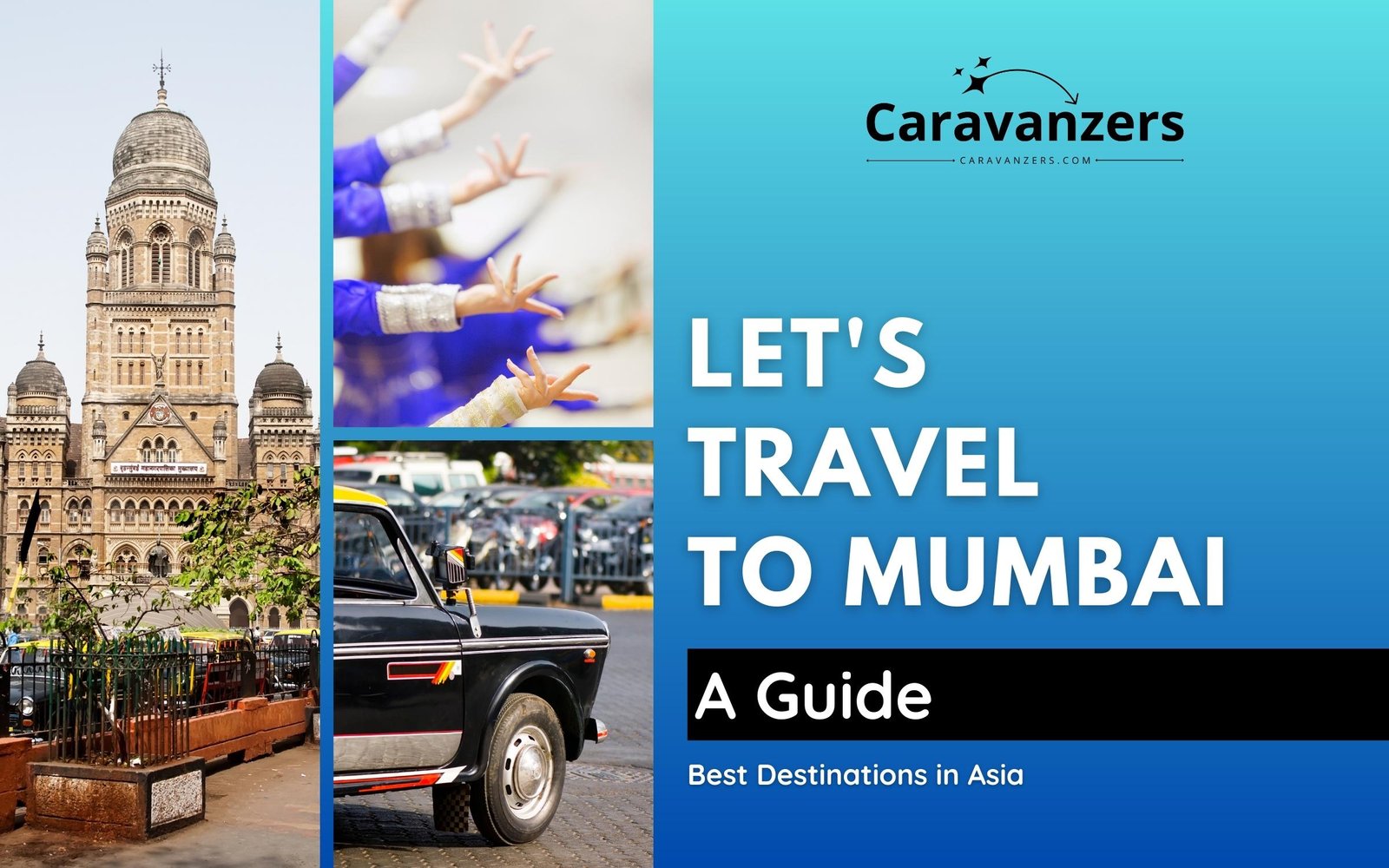
Mumbai travel. Visit this captivating melting pot of diverse cultures and fall in love. Here’s your ultimate guide.
Immerse yourself in its rich heritage and explore historical landmarks, religious sites, and a fascinating blend of architectural styles.
Indulge in the tantalizing street food culture and savor flavors ranging from local Marathi dishes to the diverse cuisines of India.
Discover the city’s vibrant entertainment scene with theaters, live performances, music concerts, and art exhibitions.
Experience the coastal charm with picturesque beaches and enjoy shopping in bustling markets and upscale malls.
Mumbai’s dynamic energy, cultural diversity, and modern amenities make it an intriguing destination worth exploring at any time.
So, if you’re planning to go there, let’s dive into this guide so you can make your plans now.
Visiting Mumbai
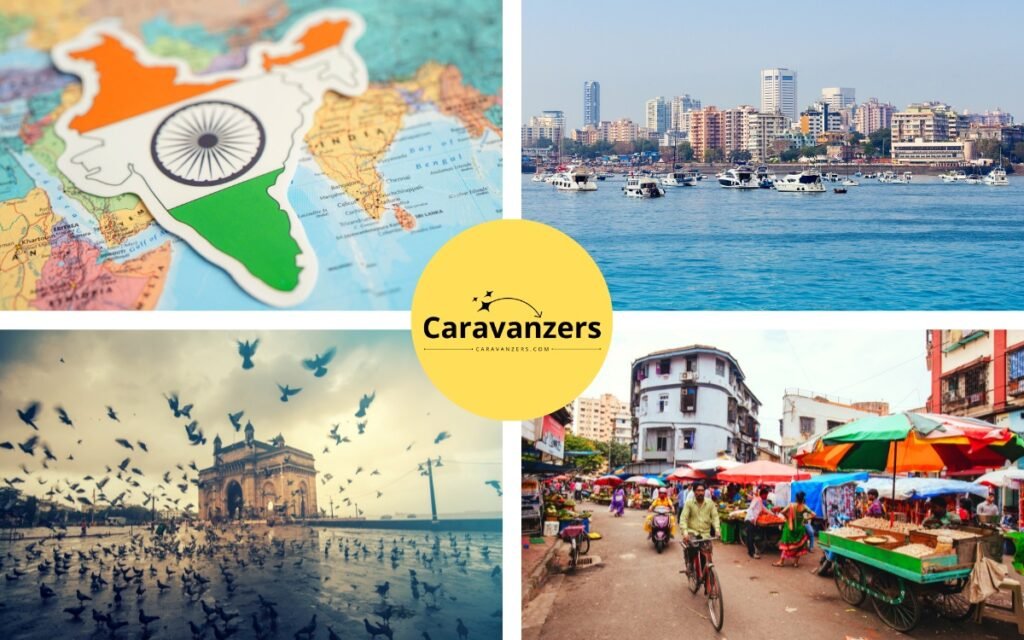
Mumbai is a melting pot of diverse cultures, traditions, and communities… in addition to its place as a mega city of 20-plus million inhabitants.
You can explore historical landmarks, visit religious sites, savor delicious cuisine from various regions of India, and witness the fusion of old and new in its architecture and lifestyle.
Mumbai is the heart of the Hindi film industry or Bollywood. It produces the most films around the world and has billions of fans from Africa to South America.
The city also hosts numerous theaters, live performances, music concerts, art exhibitions, and festivals, ensuring a vibrant entertainment scene.
Mumbai showcases a fascinating blend of architectural styles, and it has a rich historical heritage.
You can explore historical sites like Elephanta Caves, Kanheri Caves, and the UNESCO World Heritage Site of Victorian and Art Deco Ensembles of Mumbai.
So, these sites offer glimpses into the city’s ancient past and its colonial history.
Likewise, Mumbai has a great street food culture.
From mouthwatering Vada Pav, Pav Bhaji, and Bhel Puri to delectable street-side kebabs and sweets, the city offers a tantalizing array of flavors.
Exploring the street food scene in Mumbai is an adventure in itself.
Mumbai is situated on the Arabian Sea coastline, offering picturesque beaches like Juhu Beach and Marine Drive.
The city has lively markets, malls, and shopping districts catering to all budgets and tastes.
From bustling street markets like Colaba Causeway and Linking Road to upscale shopping destinations like High Street Phoenix and Palladium, Mumbai offers a variety of options for shopaholics.
The city’s dynamic energy, cultural diversity, historical significance, and modern amenities make it an intriguing destination worth exploring.
How to Get to Mumbai
Mumbai’s main gateway is Chhatrapati Shivaji Maharaj International Airport in Andheri, a suburb.
You really can’t imagine how busy it gets, handling nearly 50 million passengers annually.
It’s approximately 16 miles or 25 kilometers north of Colaba, the lively neighborhood in South Mumbai you will start your trip.
Flights arrive in Mumbai daily from all over the world, although very few airlines offer direct flights.
Only Air India flies directly from New York to Mumbai and no other direct service for Americans.
Europeans have way more options, and I would say check with your local airline.
Make sure you have your visa taken care of.
After you get your luggage, you can head to the taxi stand and jump into a waiting taxi… or you could ask your hotel to send you a pick-up, which is normal here.
Meanwhile, you can also choose to go by rideshare. Ola Cabs is an Uber alternative in Mumbai, although the American company also works there.
If you want to rough it, you can take a bus to Colaba, but honestly, why would you? A taxi will cost less than $10.
India uses the rupee, which is about 80 rupees per US dollar. There are a ton of banks, but I recommend using the State Bank of India.
Finally, thanks to the gorgeous Arabian Sea, Mumbai isn’t as polluted as other big cities like Delhi or Bangalore.
This is especially the case if you happen to arrive right after the rains!
So, yeah, this is really a great airport to come through.
Meanwhile, if you’re coming from the rest of India, there’s a good chance you will be using the trains to arrive.
Oh, and buses, too.
In both cases, you will have taxis and currency, etc.
Welcome to Mumbai!
Best Time to Visit Mumbai
Mumbai is a mega city, which means you can literally visit any time and have fun.
Winter in Mumbai goes from November to February, and generally, this is probably the best time to visit.
During this period, the weather in Mumbai is pleasant and relatively cooler compared to the hot and humid summer months.
But, hopefully, the monsoon has ended!
Mumbai experiences a tropical climate, with monsoon season occurring from June to September.
The city receives heavy rainfall during this time, which can lead to waterlogging and traffic congestion.
If you don’t mind the rain and want to experience the monsoon charm, you can consider visiting during this period.
One of the best times to visit this city is during the Ganesha Festival or Chaturthi, which is from the Hindu calendar and goes back and forth between August and September.
So, come during that time and sing along with the locals, “Ganpati baba morya!” This is in Marathi, the local language, and means, “Father Ganesha, Go!”
Think of it as the Mumbai Christmas.
Where to Stay in Mumbai
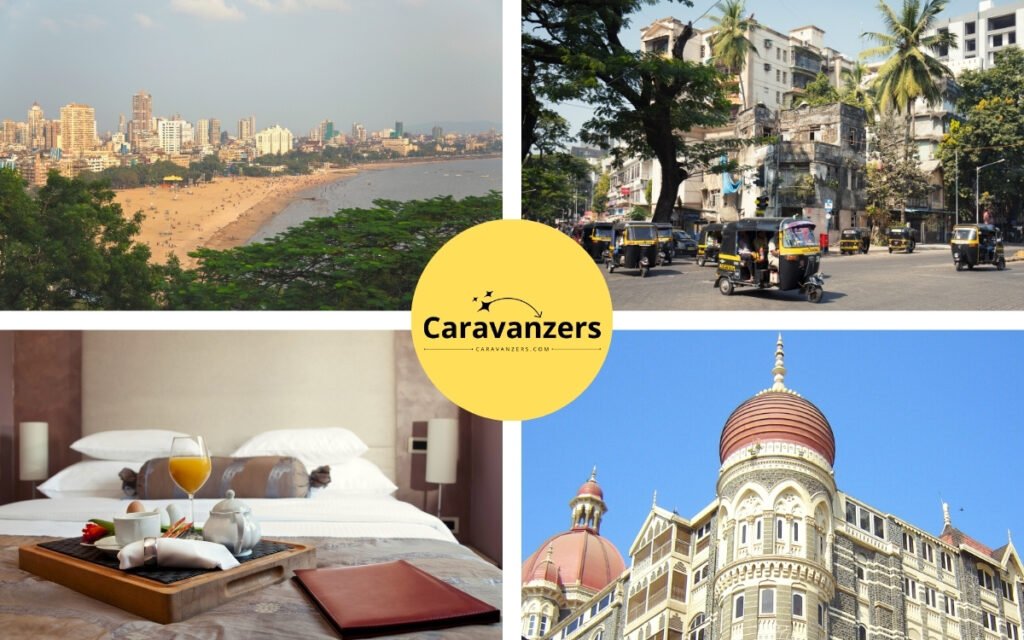
Mumbai is a busy metropolis that has a variety of neighborhoods and areas for international tourists to consider when choosing accommodations.
I would say the best places to stay in Mumbai include Colaba, Bandra, and Juhu, as well as Fort and Worli.
Colaba is in South Mumbai and is close to major attractions like the Gateway of India and the Taj Mahal Palace Hotel.
It has a lively atmosphere, numerous restaurants, cafes, and shopping options.
Bandra, on the other hand, is in the western suburbs, and this trendy and upscale neighborhood has fashionable boutiques, restaurants, and nightlife.
It’s also close to the Bandra-Worli Sea Link, and this an easy access to South Mumbai.
Bandra is basically Bollywood Town and has an interesting cultural scene, and is popular among celebrities.
Like Bandra, Juhu is a coastal area in the western suburbs and has a long sandy beach.
With a range of accommodations, from luxury hotels to budget guesthouses, Juhu is a great option.
Meanwhile, this area has wonderful street food stalls, and you can also find popular restaurants and cafes in the vicinity.
Fort, like Colaba, is in South Mumbai and is the historical heart of the city.
It is home to iconic landmarks like the Chhatrapati Shivaji Terminus (CST) and the Bombay High Court.
Fort has a mix of old-world charm and modern amenities.
It is well-connected by public transportation and offers a range of accommodation options.
Meanwhile, Worli is a central neighborhood that has a blend of residential and commercial spaces.
With the Worli Sea Face promenade, it has amazing views of the Arabian Sea.
These are just a few of the popular areas to stay in Mumbai for international tourists.
What Eat in Mumbai
The Mumbai food scene is incredibly diverse and offers a culinary experience that caters to all tastes and preferences.
Mumbai is a Marathi town and holds a special place in the local food scene.
Some popular Marathi dishes you can find in Mumbai include Vada Pav (a spicy potato fritter served in a bun), Misal Pav (spicy sprout curry with bread), Poha (flattened rice dish), and Sabudana Vada (deep-fried tapioca fritters).
Maharashtrian cuisine also features yummy seafood dishes due to the city’s coastal location, such as Bombil Fry (crispy Bombay duck), Kolambi Bhaat (prawn rice), and Malvani Fish Curry.
But, of course, Mumbai is also a melting pot of Indian cultures.
From the spicy street food of Delhi, like Chaat (savory snacks), to the aromatic biryanis of Hyderabad, you can explore the culinary diversity of India without leaving the city.
Mumbai also has delicious South Indian dishes such as Dosa (fermented crepe), and Idli (steamed rice cakes) served with various chutneys and sambar.
As a cosmopolitan city, Mumbai embraces global flavors with a plethora of international restaurants and eateries.
Areas like Bandra, Colaba, and Juhu have diverse restaurant scenes, offering everything from fine dining establishments to casual eateries and street food stalls.
In addition to restaurants, Mumbai is famous for its street food culture.
Street vendors and food stalls dot the city, offering an array of tasty treats such as Bhel Puri, Pani Puri, Kebabs, and Kheema Pav.
Exploring the vibrant street food scene is a must for any food lover visiting Mumbai.
Overall, Mumbai’s food scene is a delightful fusion of local Marathi flavors, diverse regional cuisines from across India, and an extensive range of global culinary offerings.
It caters to every palate and ensures a gastronomic adventure for visitors.
Places to Visit in Mumbai
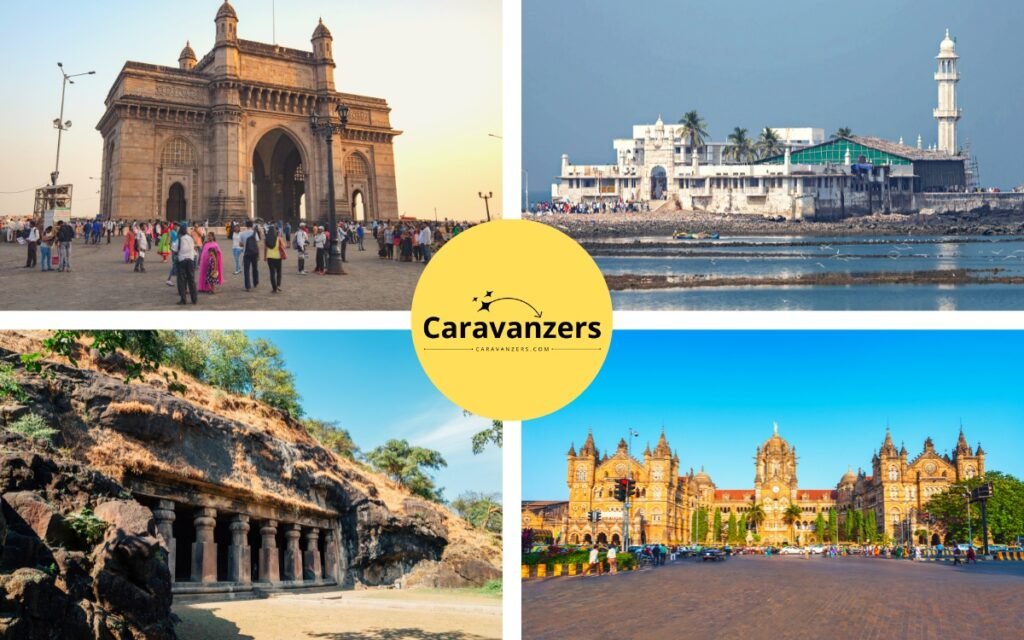
Mumbai is hands down the largest city in India.
Naturally, there are tons of attractions for exploring the city’s unique history, diverse cultures, and impressive architectural wonders.
One must-visit landmark is the Gateway of India, a magnificent arch constructed in 1924 overlooking the Arabian Sea.
This iconic structure not only serves as a popular gathering place but also offers breathtaking views of the sea and the Taj Mahal Palace Hotel.
For Bollywood enthusiasts, Film City in Mumbai, also known as Dadasaheb Phalke Chitranagri, is a major draw.
Here, you can take studio tours, visit a Bollywood museum, explore beautiful gardens, and occasionally attend events.
Witness film sets, delve into the world of Indian cinema, and plan ahead for any entry requirements.
Marine Drive, also called the Queen’s Necklace, is a picturesque promenade that spans the coastline of South Mumbai.
Another great place to visit is the Chhatrapati Shivaji Terminus (CST).
This is a historic railway station and a UNESCO World Heritage Site.
Constructed in 1887, it showcases a captivating fusion of Victorian Gothic and Indian architectural styles.
So, this bustling transportation hub is an intriguing landmark that warrants exploration.
Haji Ali Dargah, situated on a small islet off the Worli coast, is a revered Islamic shrine and a symbol of Mumbai’s religious harmony.
Accessible via a narrow causeway, this stunning white marble structure attracts visitors from all faiths, providing a serene and spiritual experience.
Juhu Beach, one of Mumbai’s most popular coastal spots, offers a vibrant atmosphere and a place to unwind.
Enjoy a leisurely walk, savor street food, fly kites, or simply relax on the sandy shores.
These attractions collectively offer a glimpse into Mumbai’s diverse facets, encompassing its historical landmarks, natural beauty, and cultural heritage.
Where to Shop in Mumbai
This mega city has a wide array of shopping options, from vibrant street markets to upscale shopping malls.
So, start your experience at Fashion Street near Churchgate station.
This is a haven for fashion enthusiasts on a budget.
It comprises a row of stalls and shops selling trendy clothing, shoes, and accessories at affordable prices.
The key here is to bargain and explore the numerous options available.
If you’re adventurous, head to Chor Bazaar.
Translating to “Thieves Market,” Chor Bazaar is a fascinating place for antique lovers and bargain hunters.
It has a range of goods, including vintage furniture, unique artifacts, electronics, and vintage Bollywood posters.
As the name suggests, you might find a mix of genuine antiques and replicas, so careful examination is advisable.
A popular spot in Lower Parel is High Street Phoenix Mall.
This is a premier shopping destination that caters to a more upscale Indian clientele.
This mall provides a comfortable shopping experience with a variety of choices under one roof.
Linking Road in the Bandra neighborhood is a lively street lined with shops and stalls.
It has trendy fashion offerings, including clothing, accessories, and footwear.
Linking Road is also great for street food.
Crawford Market in South Mumbai is a busy wholesale market that dates back to the colonial era.
It is famous for its fresh produce, spices, flowers, and imported goods.
Remember to explore different areas and markets to discover the unique flavors of Mumbai’s shopping scene.
Day Trips from Mumbai
Mumbai has several exciting day trip options for locals and tourists alike.
One of the best ones is Elephanta Caves.
They are in Mumbai Harbour and are a UNESCO World Heritage Site.
So, these are ancient rock-cut temples dedicated to Lord Shiva.
You can take a ferry from Mumbai to the island and explore the intricate sculptures and cave architecture.
Alibaug is just off the coast of Mumbai, and this is a coastal town with beautiful beaches, historic forts, and water sports.
Matheran is about two hours from Mumbai, and this is a picturesque hill station in the Western Ghats.
With a pleasant climate, gorgeous greenery, and panoramic views, Matheran is a vehicle-free zone that you can explore on foot, on horseback, or by taking a toy train ride.
Finally, probably my favorite, you have the Sanjay Gandhi National Park just north of the city.
This park is home to about a dozen of the famous Bengal tiger.
Of course, there are also various species, and you will be able to go on a safari or take a nature walk to spot animals.
These are just a few examples of the day trips you can take from Mumbai.
4 Days Itinerary for Mumbai
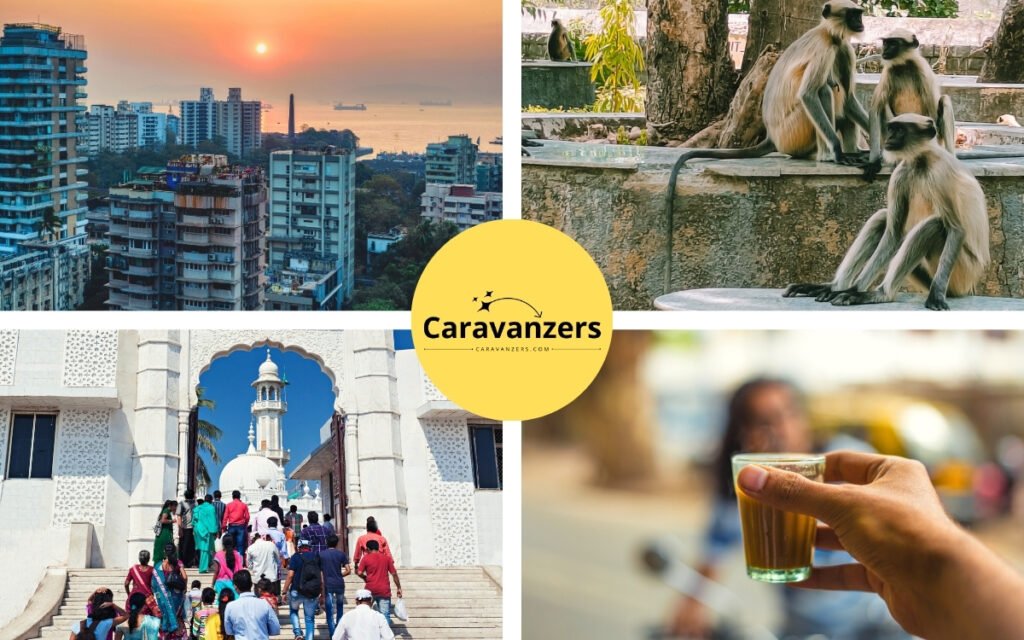
Four days can provide a decent introduction to Mumbai’s highlights, but it may feel rushed to fully explore the city’s diverse attractions and experiences.
Visitors can cover major landmarks, enjoy local cuisine, and soak in the bustling atmosphere, but a longer stay would allow for a more comprehensive exploration.
Anyway, start day 1 in Colaba and mix it up with Fort.
Visit the Gateway of India, and walk around the area.
You will explore Chhatrapati Shivaji Terminus (CST) and the Bombay High Court.
Enjoy the mix of old-world charm and modern amenities that Fort has to offer.
If you aren’t too tired, make your way to Nariman Point.
On day 2, head to Bandra. This is Bollywood at its best.
Don’t miss the opportunity to the house of the “King of Bollywood,” Shah Rukh Khan.
Explore the fashionable boutiques, dine at stylish restaurants, and experience the vibrant nightlife.
On day 3, head to Haji Ali Dargah. This Sufi shrine is one of the best examples of Muslim India, and it won’t disappoint.
On your last day, go on a day trip from Mumbai to explore the surrounding areas.
Visit the Elephanta Caves, a UNESCO World Heritage Site.
It’s in Mumbai Harbor and marvel at the ancient rock-cut temples dedicated to Lord Shiva.
Along the way, make sure to take time to taste the various cuisines available.
Hopefully, next time you will have more time because, honestly, Mumbai needs more time!
Mumbai Travel – Final Thoughts
Mumbai travel is definitely a captivating experience, combining a melting pot of diverse cultures with the buzz of a mega city with over 20 million inhabitants.
This guide has highlighted the city’s rich heritage, inviting you to explore its historic landmarks, religious sites, and an impressive blend of architectural styles.
We also explored the delicious food culture with its range of flavors, from local Marathi dishes to the diverse cuisines of India.
Likewise, we went through Mumbai’s lively entertainment scene and the coastal charm of picturesque beaches, as well as the thrill of shopping in bustling markets and upscale malls, further enhancing the city’s allure.
So, yeah, I believe you have everything you need to start planning that incredible trip now!
AJ Paris is a travel photographer based in New York. He is the editor of Caravanzers.
Follow us on Pinterest.
